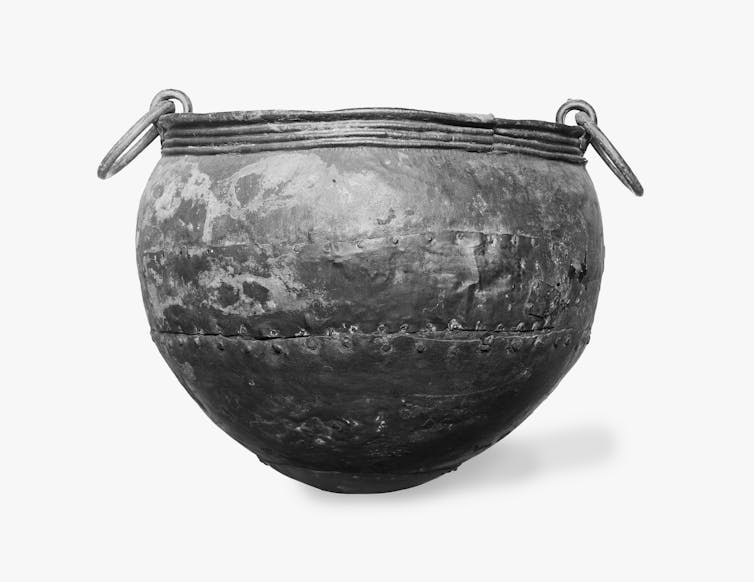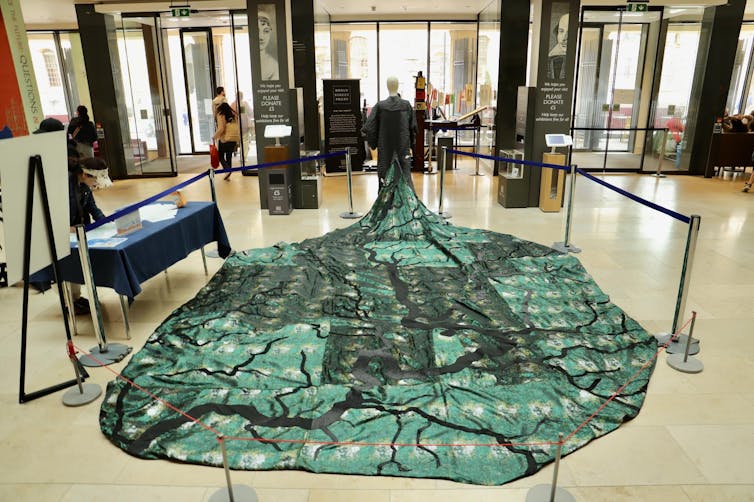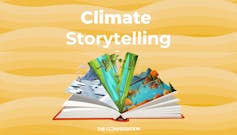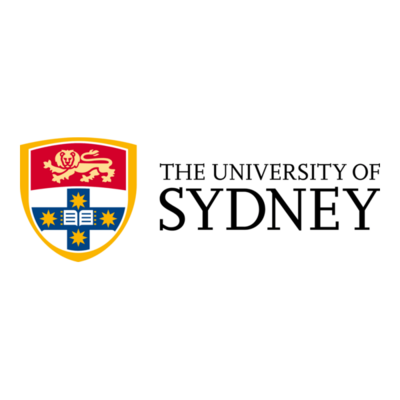- Home
Edition
Africa Australia Brasil Canada Canada (français) España Europe France Global Indonesia New Zealand United Kingdom United States Edition:
Global
Edition:
Global
- Africa
- Australia
- Brasil
- Canada
- Canada (français)
- España
- Europe
- France
- Indonesia
- New Zealand
- United Kingdom
- United States
 Academic rigour, journalistic flair
Academic rigour, journalistic flair
 Student contributions were added to a participatory artwork representing the Thames watershed as a 15-metre-long wearable robe.
Authors provided, CC BY
How we created a climate change museum to inspire hope among eco-distressed students
Published: November 24, 2025 5.20pm GMT
William Finnegan, Anya Gleizer, Tina Fawcett, University of Oxford
Student contributions were added to a participatory artwork representing the Thames watershed as a 15-metre-long wearable robe.
Authors provided, CC BY
How we created a climate change museum to inspire hope among eco-distressed students
Published: November 24, 2025 5.20pm GMT
William Finnegan, Anya Gleizer, Tina Fawcett, University of Oxford
Authors
-
 William Finnegan
William Finnegan
Head of Programmes in Lifelong Learning in Social Sciences, University of Oxford
-
 Anya Gleizer
Anya Gleizer
DPhil candidate in Performance Art and Geography, University of Oxford
-
 Tina Fawcett
Tina Fawcett
Associate Professor, Environmental Change Institute, University of Oxford
Disclosure statement
The Museum of Climate Hope project is supported by the Public and Community Engagement with Research Fund and the Cultural Programme at the University of Oxford.
Tina Fawcett receives funding from UKRI and the Askehave Foundation.
Anya Gleizer does not work for, consult, own shares in or receive funding from any company or organisation that would benefit from this article, and has disclosed no relevant affiliations beyond their academic appointment.
Partners
University of Oxford provides funding as a member of The Conversation UK.
View all partners
DOI
https://doi.org/10.64628/AB.5ve5sxv7v
https://theconversation.com/how-we-created-a-climate-change-museum-to-inspire-hope-among-eco-distressed-students-269544 https://theconversation.com/how-we-created-a-climate-change-museum-to-inspire-hope-among-eco-distressed-students-269544 Link copied Share articleShare article
Copy link Email Bluesky Facebook WhatsApp Messenger LinkedIn X (Twitter)Print article
In 2023, a visit to a local state secondary school to discuss our project, The Museum of Climate Hope, led to an unexpected discussion. A few weeks earlier, an eminent climate scientist had presented a harrowing tale of climate apocalypse to the school’s sixth form. But the students told us the scientist’s presentation, intended as a wake-up call to apathetic teenagers, had backfired.
After that “doom and gloom” message, a teacher at the school told us some students who were already concerned about climate change were showing signs of eco-distress. This term has been coined by environmental psychologists to capture the negative emotional responses – worry, anxiety, despair – to environmental change.
In contrast, teachers observed that other students who were less engaged with the issue seemed to be coping by further distancing themselves from the issue.
Subsequently, we took a group of these students to the Oxford Botanic Garden and and the university’s History of Science Museum to help us identify objects to include in our own museum’s trail.
The authors’ digital storytelling project explores climate futures with young people.The Museum of Climate Hope was designed to foster constructive engagement with the climate crisis. It can be experienced in person – as a trail of objects spread through the University of Oxford’s gardens, libraries and museums – or digitally through our interactive multimedia platform.
Climate in the curriculum
For most students in England, opportunities to learn about climate change are rare. The Curriculum and Assessment Review, published in November 2025, included education on climate change and sustainability as one of five applied knowledge areas, based on feedback from young people, parents and carers. Yet it also noted there is “currently minimal explicit inclusion of climate education in the national curriculum”.
The review has reinforced calls from researchers for climate to be more fully integrated across school subjects, from geography to history. It also noted that enhancing climate education will involve changes not only in content but also pedagogy – the way we teach.
In collaboration with other sustainability education researchers and practitioners, we have proposed a “pedagogy of hope”. We hope this will support teachers as they implement the recommendations of the review “to equip learners to rise to the challenges of a sustainable future”.
Our museum incorporates pedagogies of hope into both structured and self-directed learning. The objects on our trail represent positive stories of resilience, innovation and transformation, rather than negative stories of loss and destruction.
For example, the Oxford University Museum of Natural History is known for having an extinct dodo in its collection. But the young people who helped curate our trail thought that swifts and beavers would be better symbols for exploring successful conservation and rewilding projects.
 The bronze-age cauldron from the Ashmolean Museum.
© Ashmolean Museum, University of Oxford, Author provided (no reuse)
The bronze-age cauldron from the Ashmolean Museum.
© Ashmolean Museum, University of Oxford, Author provided (no reuse)
Another item on our trail is a bronze-age cauldron at the Ashmolean Museum. This large cooking vessel illustrates how resources were shared in those communities, while its signs of repair over many centuries indicate material value and craftsmanship, in contrast to today’s throwaway culture.
The cauldron was discovered in – and is believed to have been a gift to – the River Cherwell. So it also represents its users’ reciprocal relationship with the natural world.
Moving from museums to the classroom, we spent a term working with local primary school students to incorporate environmental themes into activities combining arts and science. Our sessions focused on understanding climate change as a local phenomenon that every child experiences directly. One example was the increased flooding of the nearby Cherwell river.
These students were introduced to another Museum of Climate Hope object in one of the Bodleian Libraries: the 400-year-old Sheldon tapestry map of Oxfordshire. They found their school and homes on the tapestry, and contrasted it with contemporary maps of the same area – helping them to explore local people’s changing relationships with rivers and landscapes. The students then created their own textile art of local nature that was important to them.
Their contributions were added to a participatory artwork representing the Thames watershed – the land area that includes the River Thames and its tributaries – as a 15-metre wearable robe. This Tamesis Unweaving robe combines elements of the Sheldon tapestry map with objects on the trail found in the Pitt Rivers Museum – a Hawaiian cloak made of feathers and an Evenki parka coat made of reindeer skin.
 Student contributions were added to this artwork representing the Thames watershed as a 15-metre-long wearable robe.
Author provided, CC BY-SA
Student contributions were added to this artwork representing the Thames watershed as a 15-metre-long wearable robe.
Author provided, CC BY-SA
For some of these young people, the first step towards climate action was creatively connecting to the local environment, and depicting a sustainable future through art.
Back at the sixth form assembly in Oxford, we were invited to do a follow-up talk. We spoke about the power of cultural change – not simply technological innovation – in response to climate change, and the importance of constructive hope.
Most of the students humoured our invitation to close their eyes and travel in time to the year 2051, to visit a future museum. It’s an activity inspired by the 1851 Great Exhibition and 1951 Festival of Britain, as well as our research on speculative digital storytelling.
They were encouraged to think of objects that might be put on a pedestal or relegated to a museum as part of the transition to a more sustainable future. We also asked them to think of any people who might have their stories told in this future museum.
One student yelled out the name of someone else in the room – claiming they were the smartest person he knew, someone who could definitely solve any problem the future could throw at us. Laughter rippled through the assembly, tension was released, and we all felt a little more hopeful.

The climate crisis has a communications problem. How do we tell stories that move people – not just to fear the future, but to imagine and build a better one? This article is part of Climate Storytelling, a series exploring how arts and science can join forces to spark understanding, hope and action.
- Museums
- Galleries
- Give me perspective
- climate storytelling
Events
Jobs
-
 Analyst, Student Information and Regulatory Reporting
Analyst, Student Information and Regulatory Reporting
-
 Lecturer in Paramedicine
Lecturer in Paramedicine
-
 Associate Lecturer, Social Work
Associate Lecturer, Social Work
-
 Lecturer, Communication Design
Lecturer, Communication Design
-
 Leading Research Centre Coordinator
Leading Research Centre Coordinator
- Editorial Policies
- Community standards
- Republishing guidelines
- Analytics
- Our feeds
- Get newsletter
- Who we are
- Our charter
- Our team
- Partners and funders
- Resource for media
- Contact us
-
-
-
-
Copyright © 2010–2025, The Conversation

 Analyst, Student Information and Regulatory Reporting
Analyst, Student Information and Regulatory Reporting
 Lecturer in Paramedicine
Lecturer in Paramedicine
 Associate Lecturer, Social Work
Associate Lecturer, Social Work
 Lecturer, Communication Design
Lecturer, Communication Design
 Leading Research Centre Coordinator
Leading Research Centre Coordinator
